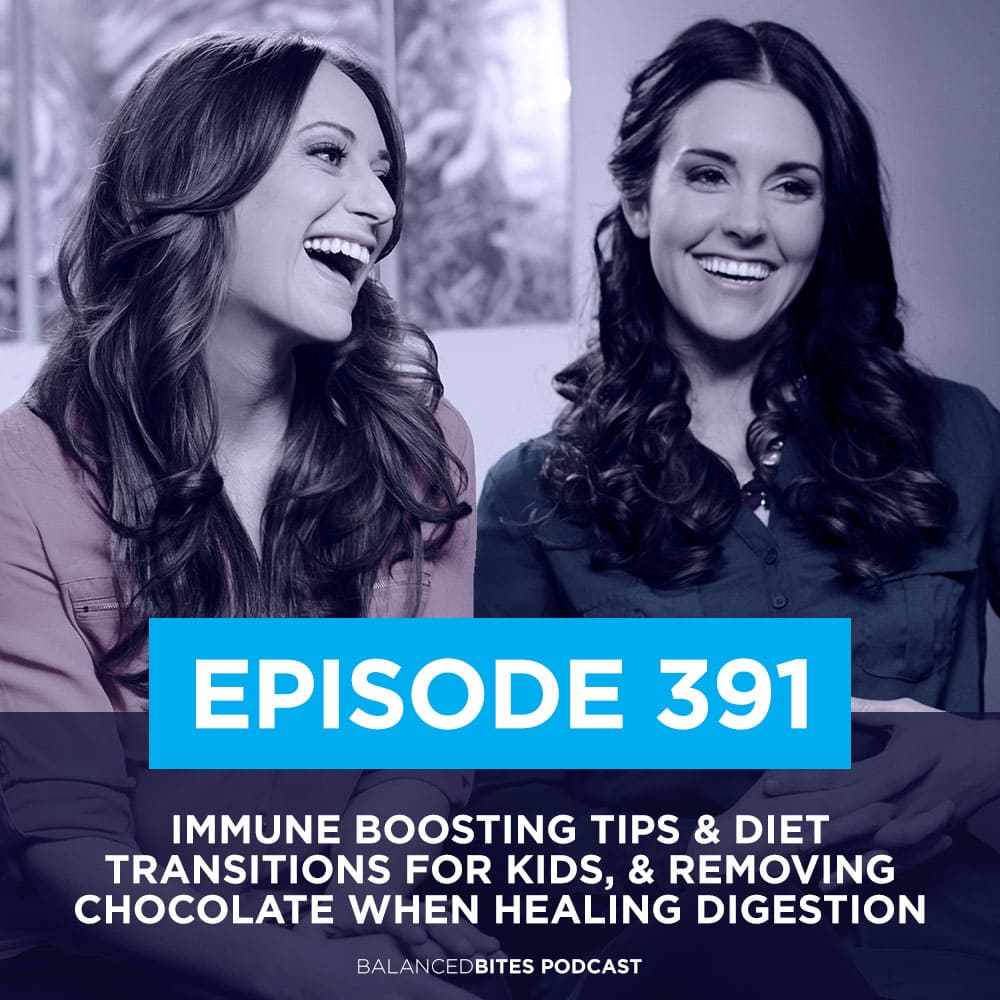 Topics
Topics
- News and updates from Diane [1:40]
- Phoenix March 27th
- Balanced Bites Meals
- 21DSD Coaches' Program
- Disney Recap
- What I ate for dinner last night [9:14]
- Immune boosting tips [14:44]
- Removing chocolate for digestive healing [29:43]
- What you missed on Instagram [33:46]
The episodes are also available in iTunes, Spotify & Stitcher.
![]()
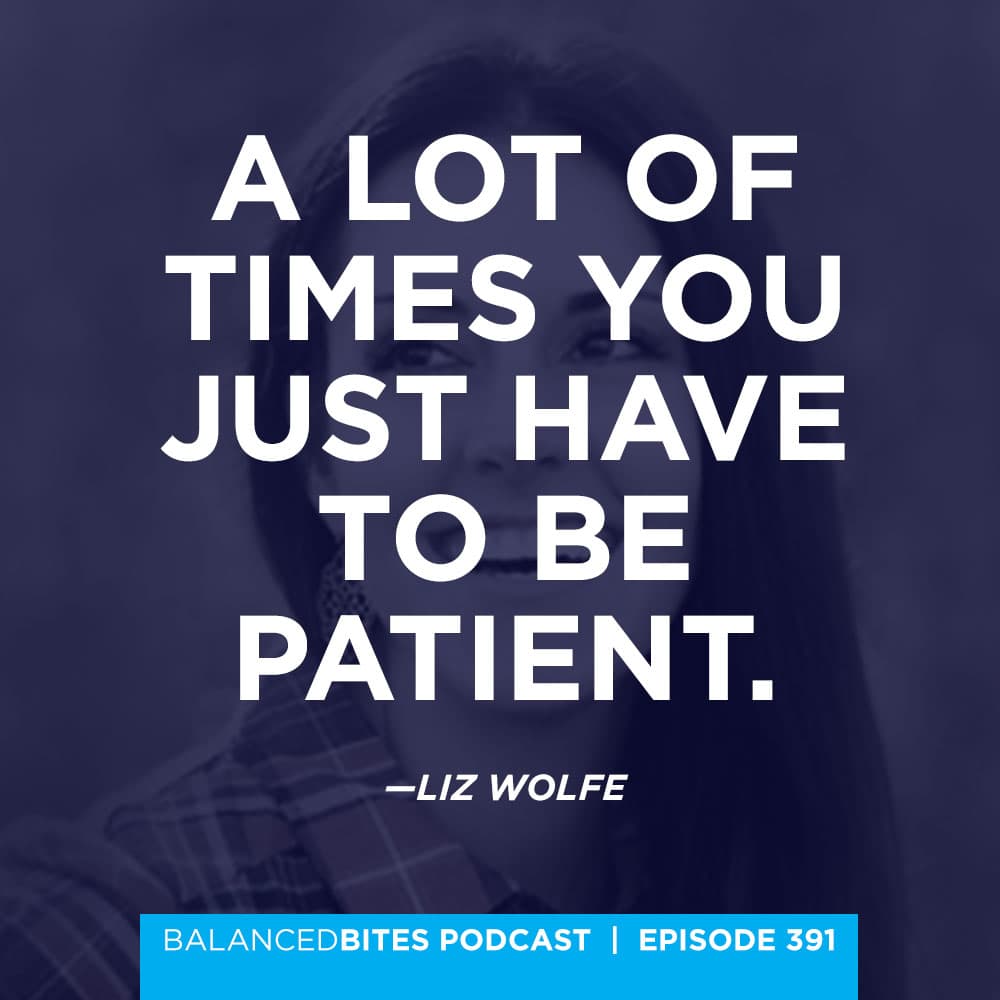

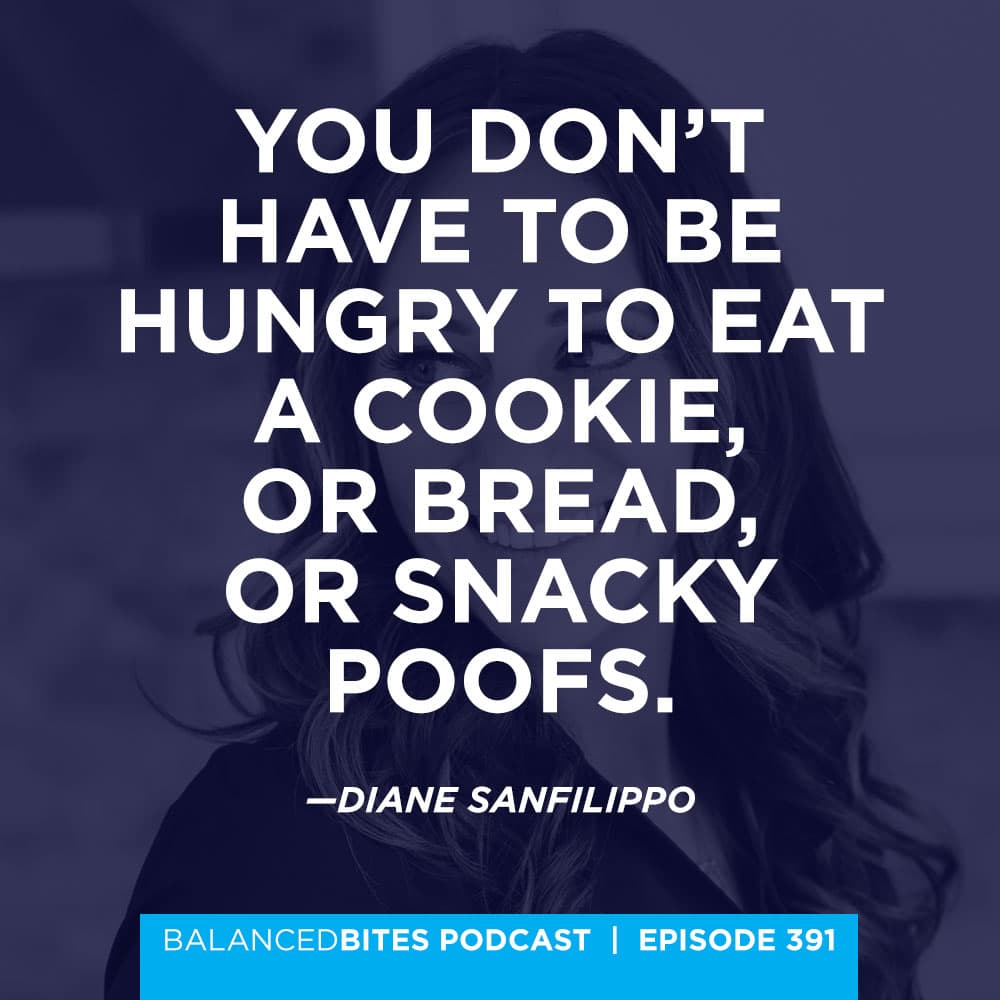
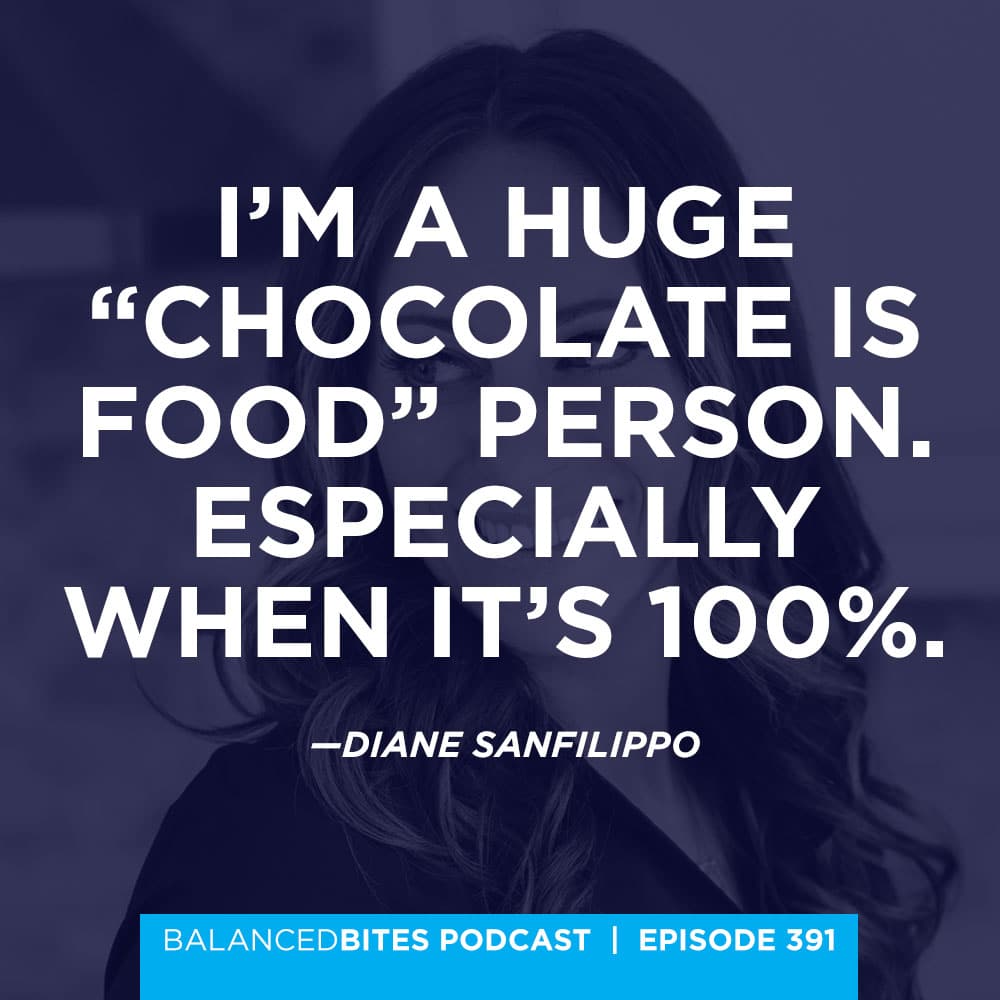
You’re listening to the Balanced Bites podcast episode 391.
Diane Sanfilippo: Welcome to the Balanced Bites podcast. I’m Diane; a certified nutrition consultant, and the New York Times bestselling author of Practical Paleo and the 21-Day Sugar Detox. My newest book, Keto Quick Start, released on January 1, 2019. I live in San Francisco with my husband and fur kids.
Liz Wolfe: I’m Liz; a nutritional therapy practitioner, and author of the Wall Street Journal bestseller Eat the Yolks; The Purely Primal Skincare Guide; and the online program Baby Making and Beyond. I live on a lake in the mystical land of the Midwest, outside of Kansas City.
We’re the co-creators of the Balanced Bites Master Class, and we’ve been bringing you this award-winning podcast for more than 7 years. We’re here to share our take on modern healthy living, answer your questions, and chat with leading health and wellness experts. Enjoy this week’s episode, and submit your questions at http://blog.balancedbites.com or watch the Balanced Bites podcast Instagram account for our weekly calls for questions. You can ask us anything in the comments.
Remember our disclaimer: The materials and content within this podcast are intended as general information only, and are not to be considered a substitute for professional medical advice, diagnosis, or treatment. Before we get started, let’s hear from one of our sponsors.
Liz Wolfe: The Balanced Bites podcast is sponsored in part by the Nutritional Therapy Association. The NTA trains and certifies nutritional therapy practitioners and consultants (including me; I’m an NTP), emphasizing bio-individuality and the range of dietary strategies that support wellness. The NTA emphasizes local, whole, properly prepared nutrient dense foods as the key to restoring balance and enhancing the body’s ability to heal.
The NTA’s nutritional therapy practitioner program and fully online nutritional therapy consultant program empower graduates with the education and skills needed to launch a successful, fulfilling career in holistic nutrition. To learn more about the NTA’s nutritional therapy programs, go to http://www.NutritionalTherapy.com. Don’t forget to check out their free Nutritional Therapy 101 course.
1. News and updates from Diane & Liz [2:07]
Liz Wolfe: OK, well hi Diane.
Diane Sanfilippo: Hi.
Liz Wolfe: What’s happening over there?
Diane Sanfilippo: Oh, you know. A little of this, a little of that. {laughs} Some updates for everyone. For those of you who have not yet heard, I’ll be in Phoenix on March 27th. Actually, you’ll also be in Phoenix then, though not also at this event. But we’ll be there for the Beautycounter leadership conference. And I’ll be there signing books on March 27th. So if you're in Phoenix, or you're in the area, come see me. I think I’m at a Half Price Books. But all the details are at www.blog.balancedbites.com/tour.
And for those of you who have been curious about Balanced Bites meals, we have a keto box and a paleo box. And I believe at the time this episode airs, we should also have the ability for you to create a custom box. If you guys don’t already follow Balanced Bites on Instagram, be sure you're following there. That’s where I’m also doing a lot more of my posts about food. And kind of separating that out from what I post on my Diane Sanfilippo account. So even things like my every day cooking, and what I’m eating for lunch, etc. All of that is going to be going more over to the Balanced Bites account.
And if you guys want to stay updated on recipes, information about spices, information about the meals. Head over to the Balanced Bites email list. It’s Balanced Bites Instagram, and if you go to that account, you can sign up for the list. It’s totally separate. All of the information that I’m doing regarding recipes and everything as I said, food related, is really going to be through the Balanced Bites information. So make sure that you guys are subscribed for that email.
And, yeah. That’s kind of the big stuff on that front. For anyone who is a health coach, interested in helping others with the 21-Day Sugar Detox, the 21DSD coaching program is going to open for enrollment on March 18th. So if you have been curious. If you’ve been listening. If you’ve done the 21-Day Sugar Detox and you're a health coach, make sure that you are tuned in and ready to go, March 18th is when it opens. So that’s just in a few days from when this episode airs. If you have not completed a 21-Day Sugar Detox, you still can right before we kick off that class. It won’t kick off until the beginning of April. So if you're listening to this, and you haven’t done a detox yet, you can definitely get started. But you do need to complete your 21-Day Sugar Detox before you become a coach. Because, obviously, you need to have that experience.
So, there you go. I think that’s pretty much it. What is going on over by the lake?
Liz Wolfe: Well, we just got through a nice post-Disney world infectious disease bomb. I don’t really know.
Diane Sanfilippo: {laughs}
Liz Wolfe: I don’t really know what she had. But I was able to; I mean, it’s not that much of a surprise. Because basically; it’s funny. Somebody today was like; so how many rides can a 3-year-old actually do at Disney World? And I was like; oh, no, no, no. It’s not about the rides when you're 3. It’s about meeting every single princess and smashing your face into their dress when they hug you to the exact same spot every other snotty kid has jammed their face.
So it’s really not a big surprise that we came back carriers of something.
Diane Sanfilippo: That is an amazing visual.
Liz Wolfe: I mean, and I just thought to myself; next time we go, I’m just going to give these princesses. Because they come around to your tables. You go to these restaurants, and you sit down and the different princesses come around to your tables to greet you and talk to your kid and you can take a picture and then they give you a hug.
Next time, I’m going to lock eyes with these damn princesses…
Diane Sanfilippo: {laughing}
Liz Wolfe: And I’m going to do the whole cross the neck like; no hugs thing! Just tell her that she’s a princess, ask her. Have the conversation, just don’t proceed to mash her face into your dress where every other snotty kid has mashed their face.
We knew it was a possibility. But we got through it, and I felt like at a certain point that I was also about to get ill. Because, you know. You're taking care of your kid. You’ve gotten sneezed on literally at close range, within two inches. You’ve gotten sneezed on, coughed on, for days. And you're giving your kid elderberry, you're doing everything you can to support their immune system. And then all of a sudden you're like; oh. Why haven’t I been taking my elderberry? {laughs} For some reason, you're just taking care of this kid and not taking care of yourself.
So at that point I was like; shoot. So I started really dosing myself up with elderberry. I probably ate three full bottles of aged black garlic in the span of 24 hours; 12 to 24 hours. I was taking as much as I could tolerate. And it seems like I fought it back. I have a couple of other tricks and tips. I mean, I guess should I share those right now? They’re pretty basic.
Diane Sanfilippo: Well, I think we’re going to talk a lot about immune health today. That’s why I loved that that was your update.
Liz Wolfe: Yeah.
Diane Sanfilippo: Yeah. It’s been a really hot topic. I mean we’re kind of coming through winter, but I think a lot of people are still dealing with it because the weather is so crazy. Immune systems are just kind of out of whack.
Liz Wolfe: Doesn’t help.
Diane Sanfilippo: I think; I wonder too if for kids; you know, it’s similar to us. Their cortisol is so high during that exciting time, that it just keeps the illness away because it’s this upregulated response happening the whole time. And then as soon as they get home, and that come down happens, it’s like. Ok, all the stuff that was there just starts to go to work.
Liz Wolfe: Yeah. And I think the sleep deprivation takes a couple of days to catch up with you. And then going from beautiful sunny perfect humidity Orlando and the beach.
Diane Sanfilippo: Yeah, all the vitamin D.
Liz Wolfe: To 7 degrees, no humidity whatsoever. That’s rough on the whole system. I will throw in one thing; this is not kid related. Although if I could have done this for my kid I probably would have. There is an over the counter; it’s either heartburn or indigestion drug. It’s called cimetidine. And you can get it anywhere. It actually has the “side effect” of boosting your immune system pretty dramatically.
And I don’t know a lot about the different parts of the immune system, and what’s boosted by what and what’s necessary for what illness. But any time, if I were to feel like something really serious was coming on, I would probably start popping the cimetidine for at least a couple of days to get that added boost from the side effect of this over the counter thing.
And really, I wouldn’t be that worried about the digestive side effects because it didn’t really bother me. So I did take some cimetidine when I felt like this was coming on. And I also did some; I think it’s called Proboost. It’s a thymic protein. Which also boosts the immune system. And it’s really easy to take. You just put it under your tongue. I guess if you could get your kid to hold something under their tongue, it would be good for kids as well. But that’s another thing that I used.
Diane Sanfilippo: Interesting.
Liz Wolfe: Yeah. Lots of tricks.
2. What I ate for dinner last night [9:14]
Liz Wolfe: Alright. Let’s talk about last night’s dinner. Diane, what did you have last night for dinner?
Diane Sanfilippo: Last night we had the meat and greens bowl; sort of. So meat and greens is a recipe I have in; which book is it in? I think it’s in Keto Quick Start. {laughs} This is like, I can’t remember where these recipes are. It’s in Keto Quick Start. Where it’s basically ground meat cooked with onions and garlic. And then you throw in a whole bunch of greens. Whether it’s spinach, or finely chopped kale. Last night I used baby kale that I normally use for salad, and just kind of took a knife through it to get it more finely chopped up. Throw it in there with the meat, and the onions. Get that to wilt down, and then dump your tomato sauce on top of that.
So you kind of have everything you need right there. And you can serve that over roasted broccoli or whatever veggies you want. But we did the Trader Joe’s cauliflower gnocchi. So when you get a bag of that, I basically take about a third of it as my portion, and two thirds Scott eats. And it’s really surprisingly filling. So anyway, that’s what I had for dinner.
And then, it was pretty filling. But around 9 o’clock, I was feeling like I wasn’t sure if I was going to make it through the night without being hungry again. Which has been something I’m really trying to pay attention to. Because I do not sleep well if I go to bed hungry. It’s just not a good thing for me.
So I had some of these crackers. I’ve shown them on my Instagram before. I should probably do a post where it’s like a Diane’s favorite things hashtag. Maybe I’ll post them on the Balanced Bites account, because I still have the box. But they’re a local brand, but it’s kind of like a flax cracker. And I put some peanut butter and some of this jelly that I have in the fridge. And I basically have peanut butter and jelly on some crackers. And it was not keto.
And now that the tour is over, and I’m training more regularly four days a week, I’m trying to dabble and see what I feel like is; I wouldn’t call it my carb tolerance. But where I feel strong and healthy, without also having cravings or without also feeling like it’s making me more sluggish. For me, it doesn’t necessarily mean I have to be eating to be in ketosis all the time. But I do feel better generally eating lower carb. So, yeah, that was what I had for dinner. And then some.
And I wanted to talk about the peanut butter and jelly on the crackers, because I feel like that’s something that people think; you know, I don’t know, a nutritionist never eats. It’s like; if I don’t post about it, people think I don’t ever eat it. It’s too dark in the kitchen at that time, and I didn’t have my phone with me. And I’m not posting every single thing; every breath I take.
So anyway, that was last night. Hopefully that gave you enough time to remember what you had for dinner last night? And I have a feeling it will be a much more brief description. {laughing}
Liz Wolfe: Juli Bauer’s 5-ingredient pizza spaghetti pie.
Diane Sanfilippo: Ok.
Liz Wolfe: We always have that around for emergencies.
Diane Sanfilippo: Everything all the time.
Liz Wolfe: All the time. It’s just; that and then chicken, like a chicken soup. We do chicken and rice. I’m trying to think of everything that’s in my; sometimes I’ll eat like three things for dinner. So last night I actually had a bowl of chicken and rice soup. Colleen made it. {laughs} It has leeks, and celery, and carrot, and rice, and chicken. She made that for us when the whole house was quarantined.
Diane Sanfilippo: {laughs}
Liz Wolfe: And then, we’ve got Juli’s; I think it’s almost 5-ingredient pizza spaghetti pie or something like that. Which is spaghetti squash, and red sauce, and some seasoned meat. And then what else do we have in our fridge right now? No. I think those are the major players in there at this point.
Diane Sanfilippo: Aside from the pantry full of sardines?
Liz Wolfe: Ah, yes.
Diane Sanfilippo: {laughing}
Liz Wolfe: People like that. Why is that weird? I mean.
Diane Sanfilippo: It’s not weird. It’s actually perfect.
Liz Wolfe: I’m more of a prepper, that’s the thing. If SHTF, I’m going to be well fed for at least three weeks with sardines.
Diane Sanfilippo: I was happy to steal a pack of sardines. Because I ate them after the event. And that was pretty much my hotel dinner. It was.
Liz Wolfe: Did you take the octopus? Did you eat it?
Diane Sanfilippo: I didn’t take that. I kind of wish I had. I really like octopus.
Liz Wolfe: Yeah. I had a little tin of octopus.
Diane Sanfilippo: How is that stuff in the can? In the tin? Is it tender?
Liz Wolfe: I haven’t tried it yet.
Diane Sanfilippo: Oh. Ok. Well. We can talk about that another time. I want to try it though. First I want to know if it’s good. Then I would like to recommend it to people who don’t eat red meat.
Liz Wolfe: Got it.
Diane Sanfilippo: Anyway. Ok.
Liz Wolfe: Today’s podcast is sponsored by Vital Choice wild seafood and organics. America’s leading purveyor of premium, sustainable seafood and grass-fed meats, and a certified B corporation. Their popular Vital Box program delivers top customer favorites directly to your door. Any mix of wild salmon, fish, and shellfish that you prefer. Vital Choice offers a wide range of wild seafood; from top shelf Alaskan salmon and halibut, to Portuguese sardines and mackerel. Plus, mouthwatering grass-fed meats and poultry. Be sure to save 15% on one regular order with the promo code BBPODCAST or get $15 off your first Vital Box with the promocode BBVITALBOX from now through the end of the year.
3. Immune boosting tips [14:44]
Liz Wolfe: Ok. So our first question today; it’s a tough one. It’s hard to read as a mom. But it’s just tough to read in general, because my heart really does go out to this person. I’ll dive into it. There’s kind of a lot to talk about, but I don’t know how much wisdom I will be able to add. Because this person does seem like she’s doing a lot of the leg work. But hopefully I can provide some wisdom.
The question is from Emily. “Y’all are amazing. Your podcast has been such a support and encouragement to me while I transitioned to paleo this past year. Thank you, thank you, thank you. My 4.5-year-old daughter has been sick a lot for the last two years. She was diagnosed with asthma. Dust is definitely a trigger. I’ve lost count of all the ER visits because of severe midnight croup attacks. She’ll need two nebulizers, and sometimes a steroid injection to open her airway so she can breathe well again.
She’s had at least five rounds of antibiotics in the last 8 months. Little colds quickly turn into croup, bronchitis, and last sprint, double pneumonia. Her IgG and IgE antibodies were high, but unfortunately, specific allergy testing isn’t available where we are living. So we will do that this summer while visiting the states. Her doctor said it’s probably just from dust. We’re on the edge of a desert next to the ocean. And put her on a daily steroid inhaler about a year ago.
Her doctor wants to move her off of the inhaler, but she keeps getting sick. My husband and I want her off it as well, and I feel like we’re stuck in a cycle of fever, croup, more steroids, bacterial infection, antibiotics, asthma issues, steroid inhaler, colds, fever, etc.
We’ve recently consulted with a holistic nutritionist, and she’s concerned about our daughter’s immune system, adrenals, and gut. We’ve just transitioned her to a gluten-free diet, and we’re eliminating most refined sugar. We’ve also started diffusing essential oils; lavender, eucalyptus, tea tree oil, and peppermint. And we’re now starting to give her a daily probiotic, in addition to immune support supplements for children. Zinc, vitamin C, echinacea, and a multivitamin. We’ve cut her inhaler dose in half, as well, while we work with her doctor to wean her off of it.
What else can we do to support her immune system, heal her gut, support asthma more naturally, and break out of this cycle? Also, any tips or tricks or resources for a picky eater? My daughter loves bread, crackers, pasta, etc. And really dislikes the gluten-free version of those products. I’d love to transition the whole family to mostly eating a paleo diet.”
Ok, obviously disclaimer. I cannot give medical advice. Listen to your doctor, work with your doctor, etc. Etc. But I’ll just comment on a few things.
First of all, a lot of times you really do just have to be patient. It sounds like you’ve started the work of looking into gut health, and transitioning a diet, and using different immune supportive techniques and things like that. And that’s great. And sometimes it takes time. So really be open and willing to cut down; or to step down with your doctor really slowly versus feeling like there’s a failure at any point if you have to go back to what you were doing before. Because this type of stuff takes time, and the process is not linear.
So number one; remember that. And with that, also really try not to stress too much. And just let things be and breathe through them. Manage your own emotional state as best you can, whether that means talking via Skype with a counselor or doing some kind of deep breathing exercises. My trainer got me hooked on the; I think it’s the Wim Hof method. It’s a really great method for almost kind of forcing your body into a calmer state. And it’s really, really helpful.
And I say that because kids are so, so sensitive to our emotional states. And kind of take on our stress, and that can affect their little bodies, as well. So I think that’s really, really important.
I would also say; people aren’t going to like this. But be really careful with the essential oils. I love essential oils, and we diffuse them. I think they’re wonderful air fresheners, and many of them actually have scientifically studied health supportive properties. Particularly like eucalyptus with respiratory stuff. Lavender and whatnot. But at the same time, these are plant constituents. Concentrated. Like, beyond anything that you would find in nature. So you really do not need much.
I have a habit of really going overboard with the amount; the number of drops of essential oils that I’ll use when I’m diffusing. And really, I think that that can be too much. With kids, you want to really gently; anything that you're doing you want it to be gentle and almost understated. So just be careful that you're not doing too much on the essential oils. Because that could also bother kind of a sensitive respiratory system, as well.
As far as the probiotic goes, there is some testing that you could do, when you go to the states. I think food allergy testing is a good idea. I’m not really familiar with the best food allergy tests for children. I know that Everly Well does some really great food allergy testing that you can do at home, but I have no idea if it’s for kids or not.
You might also look into doing like a GI map test, or an organic acids test if you have someone that can interpret those for you. And from there, you can kind of choose a probiotic that directly addresses whatever issues you uncover with the GI map test. And that can be helpful.
Probiotics are still this kind of weird; we have some really strong evidence that suggests that they should be used in a certain way. And then there are other studies that come out and say probiotics don’t do anything. And I think it really comes down to finding the proper probiotic for your needs. And then continuing to feed that particular; feed the good gut flora and build and build on that as you can. And of course, that’s rough when you're going through this figuring out what’s going to work. And then sometimes having to resort back to antibiotics and whatnot. So just be patient. Figure out exactly what you need, and then be patient with it as you incorporate it into your routine.
Another thing that I learned a long time ago that popped into my head was the association of asthma and low stomach acid. And I really don’t know for sure what that connection is. But it might be something you would want to Google. And being able to support your daughter’s digestion from north to south. And that could maybe make a difference.
What’s going to play into that is most likely food intolerances or food sensitivities. Food sensitivities can manifest for a million different reasons. Sometimes it’s not even the food itself that’s actually a problem; it’s whatever state the body was in when it encountered that food. And in the end, it doesn’t really matter.
So at this point, I see that you're transitioning away from the more processed foods. The gluten, and whatnot. And that’s hard. For me, personally, I let my daughter eat quite a few things that are not paleo until we get to the point where I see that it’s causing other problems. As soon as there’s something that we need to figure out, the first thing I need to do is pull out; for example with my daughter, dairy. And I think that’s something really important to remember.
You're going through a lot here, and she’s eating foods that are known to be problematic for a lot of people. And as far as that transition goes, sometimes it really is just an ugly, like eat this or don’t eat it. But if you're hungry, you're going to eat. And you do want to be careful with that, because of course you want your daughter to be well-nourished. So if you can at least pick up the slack during that transition with a good probiotic, and a good multivitamin, and your immune supplement.
I am not sure; I’m wondering if echinacea; I don’t want to use the word contraindicated. But that’s the only thing that comes to mind right now. I don’t remember, but I think I read somewhere that echinacea might be contraindicated with some kids with allergies. I could be completely making that up. There’s an herbalist somewhere screaming into their phone right now, because I’m completely wrong. So please look into that. I love the zinc, I love the vitamin C. If you're doing vitamin C, either whole foods based vitamin C or sodium ascorbate, versus ascorbic acid would probably be good. Adding Epsom salts baths are always helpful, just for relaxation and kind of breaking that cycle of stress around these types of things.
But again, back to the food. Try and support; figure out where you can get those nutrients in, and what she will eat that is good that you can feel like; ok, she’s still getting some nutrition in while we deal with the peasant rebellion. Find out what she will eat, and give that to her. And there have been several times with my daughter where she’s asked for food, and I’ll say; Sure you can have that. But first I need you to have some good protein to make sure you're filling your belly before you have, whatever it is, that’s not necessarily nutrient dense.
If she says, no I don’t want that, then I just say; oh, well you must not be hungry if you don’t want to eat that. So when you're really hungry, and you're ready to have some protein, or whatever it is, then we can talk about having whatever, your gluten free crackers. Not trying to give her a complex around food, but as a mom, you do have to recognize when those moments are where you know she actually isn’t hungry, or she needs some real food.
So I really highly encourage you to continue this process of modifying what she’s eating. It can be; try your best to keep as much stress out of that as you can. It can be a slow transition. You don’t have to rip off the Band-Aid if you think that’s going to be too painful. The important thing is that you just get there. Because until you eliminate the gluten containing grains, the more irritating grains. And if you're on dairy, the dairy as well. You're not really going to know how much that could be causing. For example, a suppression of stomach acid. Because of food intolerances. Leading to other issues.
So obviously there’s a ton going on here. And again, I want to reiterate that the process of moving forward is not going to be linear. And don’t get discouraged. This is a process. Observe it. Go with it. You're doing a great job. Maybe get some of that testing to see what kind of probiotic you can use.
And oh; one more thing. You can get air purifiers that you can clip to your clothing. I wonder if that could be helpful. Just on a day to day basis. Just something that’s really sort of clearing the air around her face. That could be something. And maybe some sort of air purifier next to her bed in the evenings.
That’s what I got!
Diane Sanfilippo: That’s a well-rounded response. I think; she said something about already cutting the inhaler dose in half. Which, if that’s going well, that’s a really big win. You know? I think a lot of times, regardless of the situation, it’s hard to kind of pause and recognize those wins in the moment. And like you said, this isn’t necessarily going to be a linear process. They may get a lot of progress going forward, and then regress a little bit somewhere. But cutting that in half, if that is going well right now, that’s a really huge deal.
A couple of notes I wanted to throw in; I’m with you. I’m backing you up on the nutrition side of things. And I know, and have witnessed, how difficult/challenging it can be to have your kid eat the thing you want them to eat versus the thing they want to eat. I think we have to remember that it is the obvious choice that they will want something sugary, carby if it’s there. So to your point, Liz; recognizing when they may not actually be hungry and not just constantly offering whatever the thing is that they’ll say yes to, because we would all say yes to a cookie if it’s in front of us. You don’t have to be hungry to eat a cookie, or bread, or snacky poofs or whatever they are. We don’t have to be hungry to eat that stuff.
And this is a delicate balance; not beating yourself up for the fact that that might be the thing that today is all that gets down. But it is still sugar/carbs to the body. And if you're working on healing digestive stuff. If there’s some candida overgrowth. If there’s anything going on with her digestion that’s being exacerbated by sugar. And when I say carbs; I mean in the refined form. I don’t mean some berries or sweet potato. I mean the refined stuff. So even the gluten free stuff.
It’s great to try to get the gluten out, but just recognizing that this is a whole spectrum of foods that the human body can deal with. But when you're in a situation of this crazy immune; I don’t know, immune imbalance that you're trying to figure out. Having fewer alluring foods in the house will consistently be something that is a good idea. If it’s not in the house, and it’s not an option, it’s not an option. I’m not saying that’s where you need to go tomorrow. It’s just, if you find that the behavior pattern around a certain type of cookie is constantly; if it’s there, your kid is going to want it and ask for it and pull it out of the cabinet, then as a parent making that less available is part of the responsibility.
Again, I’m not beating anyone up. I know that this is a big challenge. It’s just; like you said, Liz. Whether you present the protein and don’t present the other food. Or, not have those other foods in the house all the time. Because you're making it harder on yourself if it’s even an option. Anyway, there’s that. And it is still sugar in the body. So if you're having trouble figuring out what to offer, getting the sugar out is still going to be the best idea.
Digestive Wellness for Children is a book that I would recommend. And I think you were hinting at this, Liz; that certain probiotics are good for certain types of issues. And Elizabeth Lipski, in that book, she really talks about what kids might be going through, and what specific probiotics could be helpful. Specific strains. And I know the world of probiotics is so vast that sometimes you're using one, you might see some benefit and you might now. And it’s just kind of a wild, wild west. So that’s a book that I always recommend to people to check out. Because if you're dealing with all different types of issues, I think that might be a good resource to have on hand. Just to be able to reference.
4. Removing chocolate for digestive healing [29:43]
Liz Wolfe: Our next question for today; this technically came in for Diane. But maybe we’ll both weigh in. We’ll see. Alright, this is from Theresa. “In your book, Practical Paleo, you recommend avoiding chocolate if eating for digestive healing. Does this also mean to avoid raw cacao? Or is it ok to use cacao whilst following the protocol recommended in the book? Thank you.”
Actually, I don’t have anything to say about this. Diane, you go for it.
Diane Sanfilippo: {laughs} So I talk about this a little bit in my episode with Mickey Trescott; which I think. {laughs} I’m a little lost in my; that one aired last week. So if you didn’t hear that, we talked about chocolate, and how the cacao bean has some irritating properties for; what did she say? It’s technically a seed, I think. So some of the antinutrients in chocolate are what we’re talking about being irritating to your system.
Let me just say this; if you're following a protocol for digestive healing. If you're following a protocol for autoimmunity. Any of the protocols that you're following; when we eliminate things like eggs, nuts, and seeds, nightshades, chocolate. When we eliminate real foods in one of those protocols. And when I say chocolate as a real food, I do primarily mean 100% chocolate or cacao powder or something of that nature versus 70% chocolate with 30% sugar or whatever else is added to the bar.
We’re talking about it for a period of time, and then reintroducing. So I get it; the idea of not having chocolate for a lot of people is totally overwhelming. Also, chocolate; Liz, we’ve talked about this on the show before. Chocolate or cacao is one of the most antioxidant rich ingredients/foods out there. And a lot of times, when antioxidant studies are done, pure chocolate or pure cacao is one of the sources of those antioxidants. So I’m a huge chocolate is food person. Again, especially when it’s 100%. And that’s why I always post about the 100% dark chocolates that I recommend.
But in this case, some of the antinutrients in the chocolate, just like in other seeds, other beans, etc. can be irritating to your digestion. And the other part of it is the caffeine can be irritating to digestion; partially for the upregulation of cortisol depending on how you respond to caffeine. We all have a different caffeine tolerance. We metabolize it differently. That’s just a genetic thing for all of us.
So, yes, avoid it. I do also mean raw cacao. You may be able to tolerate carob, although that is also technically a legume, I think. But I would just avoid it for that 30 days or so, reintroduce it after that. See how you do. And that’s kind of it. But that is what it means. If you need to find other smoothies to do, you can find a pumpkin based smoothie in a lot of my books, getting rid of the cacao in that sense. Finding just some other sources of; I don’t know, a treat if you're using it for a treat. But then remember you can definitely reintroduce that. It’s not a life sentence. It’s not a “never have chocolate again” type of thing.
Liz Wolfe: Today’s podcast is sponsored by Perfect Keto. Dr. Anthony Gustin and his teams have created a line of supplements that are super clean and effective, no matter what your dietary needs. Diane has been blending their MCT oil powder into her matcha latte lately. Not only are MCTs; medium chain triglycerides; a premium source of your body’s preferred type of energy, they help to fuel your brain and body, but there’s also no added taste. It makes your coffee or matcha wonderfully creamy. Check them out at PerfectKeto.com and use the code BALANCED for 20% off at Perfect Keto; and their sister site, Equip Foods.
5. What you missed on Instagram [33:46]
Liz Wolfe: Alrighty. Let’s talk about what we missed on Instagram. What you may have missed on Instagram.
Diane Sanfilippo: {laughs}
Liz Wolfe: And I will start. You might have missed my; I mean, I’m going to call it hilarious, Disney recap. I put all of my Instagram stories from Disney world and my sort of running commentary. I pinned it in my; what are those called?
Diane Sanfilippo: Highlights.
Liz Wolfe: Highlights. I pinned it to my highlights. So you can go to my Instagram.
Diane Sanfilippo: {laughs} I don’t know about pinning. I think the word “pin” implies it’s on Pinterest.
Liz Wolfe: Oh, right. Which I never got; do you do Pinterest? I don’t do Pinterest.
Diane Sanfilippo: I don’t. Somebody on Team Balanced Bites may do it.
Liz Wolfe: Yeah. My friend Amy when she was my friend and assistant, she used to do my; I just said “pinstagram.” She used to do my Pinterest for me. I don’t know what that status is. But I have; what do you call it? I attached it to my highlights? I put it in my highlights?
Diane Sanfilippo: Saved it. Usually people say I saved it to my highlights.
Liz Wolfe: I saved it to my highlights.
Diane Sanfilippo: Listen. We all only started doing it about 6 months ago. Maybe a year.
Liz Wolfe: Still learning. But anyway. It’s there. And I don’t know. I still look at it every once in a while, to entertain myself. Highlights of the highlight would be…
Diane Sanfilippo: A lot of princesses.
Liz Wolfe: A lot of princesses. My favorite one was when the first night, at Cinderella’s royal table, where it was the first night of meeting princesses. And my daughter was watching Anastasia and Drizella make the rounds. And she was scared of them, so she hid under the table. And I think they must have some kind of rule that they must make contact with all children, and so it was either Anastasia or Drizella, brilliantly got down on all fours, and coaxed her out from under the table to have a conversation with Lady Tremaine about how Lady Tremaine locked Cinderella in her room because she had her best interests at heart.
It was an adorable, adorable conversation. Such a funny moment. And I’m pretty sure it’s in the highlights. We kind of got a shot of her under the table, with Drizella back there trying to get her out. It was pretty great. So there’s that. There’s my commentary on all the rides. And what I called the most magical cluster you know what on earth.
Diane Sanfilippo: I also enjoyed the fashion; both yours and your kids. {laughs}
Liz Wolfe: Ah, yes. Yes. The fashion was great. The great thing about being a parent is Disney is literally nobody; I mean, it shouldn’t matter what other people care what you're wearing in the first place. But it does not matter; it is straight up the fanny pack, cargo shorts capital of the world. It is all about convenience and how much you can hold, and how comfortable you are. It’s great.
Diane Sanfilippo: I love it. Great. Well, speaking of fashion. What you may have missed on my Instagram stories was a revival comeback of the Stitch Fix fashion show. I’ve been getting Stitch Fix’s for; I don’t know. A lot of years.
Liz Wolfe: Forever. Yeah.
Diane Sanfilippo: Yeah. I said in my story I thought since 2011; I think since 2012. I have gotten nearly 50 of them. I think it was my 48th box. They tell you on the invoice thing. And I was like; oh my gosh, that’s kind of embarrassing. I think a large majority of what’s in my closet has come from Stitch Fix. Or food brands, like the sweatshirt I’m wearing today. Which is my Five Mary’s sweatshirt.
But yeah. I’ve been doing that again lately, trying to put on real clothes inspired by The Happier podcast. They had a whole thing; I don’t know if it was the month of January, or which month it was. But they were like; let’s wear real clothes all month. And to some people, that may not be easy to understand. But those of us working from home are basically in sweatpants all the time.
Liz Wolfe: Sweatpants are real clothes. If they’re on your body; they’re real clothes.
Diane Sanfilippo: Well there was a time when I believed that leggings were not pants, and I am very sorry to everyone who I judged from a distance.
Liz Wolfe: Why put that in the world.
Diane Sanfilippo: What?
Liz Wolfe: Why would you put that in the world. That’s terrible.
Diane Sanfilippo: I mean; I know. I’m deeply remorseful about that time. {laughs}
Liz Wolfe: Good.
Diane Sanfilippo: Anyway. So yeah, I’ve been into my Stitch Fix, and I shared a little fashion show. People seemed to really enjoy that. My friend Caitlyn, at Grass-fed Girl on Instagram. She always does it when she gets her Stitch Fix, and I so enjoy watching it, that I was like; I should probably do that. I just don’t have a good, you know, fashion blogger mirror. The only full length mirror I have is inside of my closet. And the angle of the lights in there makes it really difficult to see with my phone in the mirror. It was just kind of a cluster, but I did my best. So there’s that.
Liz Wolfe: Alright friends, that’s it for this week then. You can find me, Liz, at http://realfoodliz.com/ and Diane at http://dianesanfilippo.com. Join our email lists for free goodies and updates that you don’t find anywhere else on our website or on the podcast. While you’re on the internet, leave us an iTunes review. See you next week.

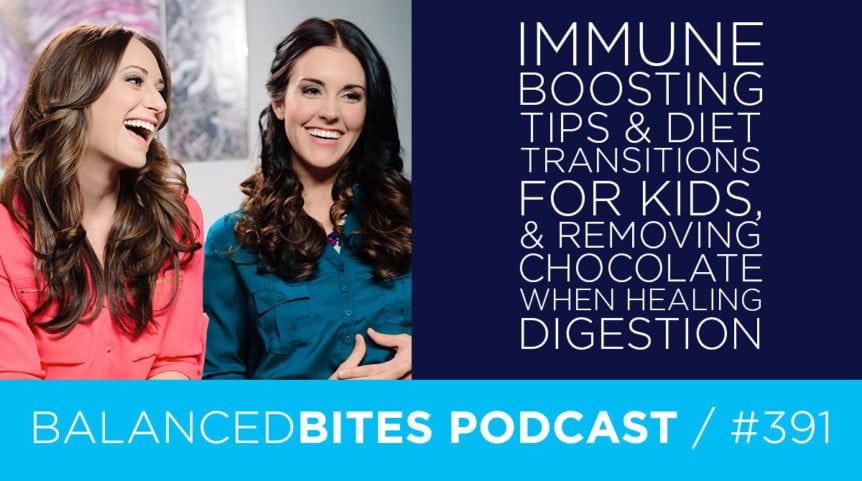

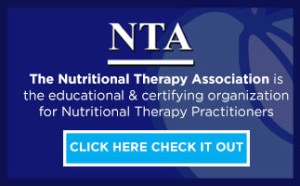
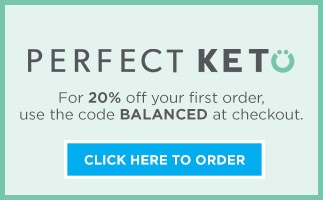
Comments 3
Regarding the mom concerned about her daughter’s asthma. My daughter grew up with a similar problem. She would get sick in the fall. It would trigger her asthma, they would put her on burst treatment with prednisone. She would be fine for 2 weeks and then she would get sick again. This was common for her with prednisone. That stuff lowered what immunity she had, but that was their protocol. Between 3 and 4 years old she was allergy tested and came up positive for everything airborne, but no allergies to foods. Fast forward to when she was 21, up to maintenance level on her allergy shots and still getting sick with asthma flare ups, bronchaitis, colds, and antibiotics etc. She was not happy to say the least and firmly told the doctor something was wrong. She was doing everything she was suppose to do. He ran an IgA test on her. This is not what they usually run. Her pediatrician and 3 allergists while she was growing up never even talked about it. Her result was extremely low. IgA affects your mucous membrane from your nose to your digestive tract. It is common to have allergies and digestive issues with low IgA. It has been a long time since I have read about this, so I recommend you do some reading yourself. She was told some people have low IgA and experience no problems. Others like my daughter have all the problems. She does feel better when she eats a paleo diet,. There is nothing you can do, no medicine you can take to raise your IgA. Hers has gone up some in the last few years on its own, she gets sick a lot less, but still has some digestive issues. The increase in IgA is from nothing she has done. We were told that IgA can increase on its own. I wish you luck caring for your daughter. I do believe we need to expect a lot from our doctors and that the low carb lifestyle with lots of vegetables is the best way to get our nutrition and heal our bodies as much as our bodies are able.
Author
Thanks for sharing this Laurie.
Thanks for sharing this Laurie.